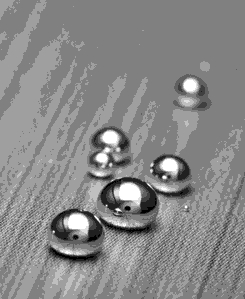Metals drive chemical shift
 Researchers have unveiled a revolutionary technique using liquid metals.
Researchers have unveiled a revolutionary technique using liquid metals.
The innovation aims to replace outdated and energy-intensive chemical engineering processes dating back to the early 20th century, offering a promising avenue for 'greening' the industry.
Chemical production is a significant contributor to global greenhouse gas emissions, accounting for approximately 10-15 per cent. Additionally, over 10 per cent of the world's total energy is consumed by chemical factories.
Traditionally, solid catalysts, often made from solid metals or compounds, dominate the chemical industry. However, these processes demand extreme temperatures, reaching up to a thousand degrees centigrade, resulting in high energy consumption.
The new method introduces liquid metals, specifically dissolving tin and nickel, providing them with unique mobility.
These liquid metals can migrate to the surface and interact with input molecules, such as canola oil.
This process facilitates the transformation of canola oil molecules into smaller organic chains, including propylene, a crucial high-energy fuel for various industries.
“Our method offers an unparalleled possibility to the chemical industry for reducing energy consumption and greening chemical reactions,” says Professor Kourosh Kalantar-Zadeh, Head of the University of Sydney’s School of Chemical and Biomolecular Engineering.
“It’s expected that the chemical sector will account for more than 20 per cent of emissions by 2050.
“But chemical manufacturing is much less visible than other sectors – a paradigm shift is vital.”
The team dissolved high melting point nickel and tin in a gallium-based liquid metal with a melting point as low as 30 degrees centigrade, allowing catalysis at significantly lower temperatures.
The researchers highlight the accessibility of single-atom catalysts, achieved by dispersing metals in liquid metal solvents at the atomic level.
Dr Arifur Rahim, senior author and DECRA Fellow at the School of Chemical and Biomolecular Engineering, explains; “Single atom is the highest surface area accessibility for catalysis, offering a remarkable advantage to the chemical industry.”
The newfound formula holds potential for various chemical reactions through mixing metals at low temperatures. Dr Tang notes the low temperature required for catalysis, suggesting it could theoretically be done with a gas cooktop in the kitchen but advises against attempting this at home.
This breakthrough signifies a significant step toward reducing energy consumption and emissions in the chemical industry, addressing a crucial aspect of global sustainability.
More details are accessible here.








 Print
Print